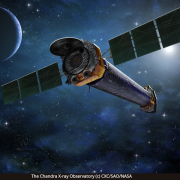Tuesday 15th November 2022 Unveiling the Dark Universe with the Dark Energy Survey
The Caroline Herschel Prize Lecture 2022
7.00 pm Tuesday 15th November 2022 at the 10E 0.17 Lecture Theatre, University of Bath and online via Zoom
Dr Alexandra Amon
University of Cambridge
Dr Amon uses observational data for over 100 million galaxies and a technique called ‘gravitational lensing’ in order to test the Standard Cosmological Model. The intriguing results she and her collaborators find hint at cracks in the currently accepted model for our Universe, which is mostly dark, with over 95 percent of it in the form of dark energy and dark matter, whose natures are the biggest mysteries in modern physics.
In her Caroline Herschel Prize Lecture entitled “Unveiling the Dark Universe with the Dark Energy Survey”, Dr Amon will describe some of the mind-blowing historical moments leading to the paradigm-change, the challenges in the field, the Dark Energy Survey and its results, including the experimental process – from nights at the remote telescope to hurdles in the data analysis. The conclusions will guide the audience to appreciate current mysteries and future directions.
Dr Amon is an expert in cosmology and a Senior Kavli Fellow at the Institute for Cosmology at the University of Cambridge. Before this, she was a Fellow at Stanford University and the SLAC National Accelerator Laboratory. She obtained her Masters degree and PhD at the University of Edinburgh in 2018 and has numerous awards, such as the Michael Penston Thesis Prize/Fermilab Tollestrup Award. Dr Amon is co-coordinator of the Weak Lensing group of the worldwide collaboration “The Dark Energy Survey”, including over 100 members.
the video of Alex Amon’s lecture is now available on Youtube, here.


